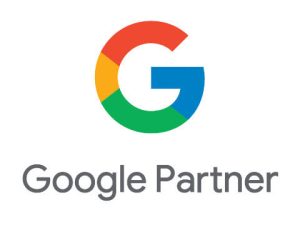So, you’re jumping into budgeting earlier this year than last – nice work! Starting now will allow you to align your budget with goals that are attainable and get you where you need to be. Whether that’s building census, growing awareness, executing on a rebrand, maximizing a referral program or all of the above, your goals are what ultimately will drive your marketing budget.
“Don’t make the mistake of starting with a number and then backing into your goals,” says Angell Marketing account supervisor, Brittany Dagenhart.
Some teams approach it just like that: We have this budget allocation for marketing and here are our goals.
“On the surface, that seems to make sense,” Brittany shares. “But the smart way to go about budgeting is to begin with goals, use historical data to calculate what it will take to get you to those goals and then align the tactics most suited to achieving them.”
Do the math
For all communities, managing occupancy – and doing the calculations around attrition, advancement into AL or MC inventory, and any other census drivers – is the first step in planning for your next fiscal year goals. Essentially, your first step in planning is to determine your budget by matching the net gain in occupancy with the cost per sale. Stay with us here … If you have data on your census, including total inquiries, move-ins and move-outs for the past year, you can start to build your budget equation. If you don’t have this data, you can use industry standards (but do make a commitment that moving forward you and your team will track these numbers).
The numbers you want to establish to create a budget that will get you to your goal include:
- Total inquiry-to-move-in ratio
- Total move-ins needed*
- Cost per inquiry
*Bonus calculation: Getting to your “move-ins needed” number starts with the occupancy goal. How many move-ins do you need to reach your occupancy goal? How many move-outs do you expect that you’ll need to back-fill? Use those numbers to calculate your total move-ins needed.
Using last year’s numbers, a standard calculation to establish your inquiry-to-move-in ratio may look like this (and keep in mind, these numbers are for instructional purposes only and may be wildly different from your own):
- Total number of inquiries you received in FY2022 = 825
- Total number of move-ins in FY2022 = 33
- Inquiry-to-move-in ratio (33/825 = .04) = 4%
A standard calculation to establish your cost per inquiry may look like this:
- Total number of inquiries you received in FY2022 = 825
- Inquiry-generating marketing budget for FY2022= $330,000
- Your cost per inquiry last fiscal year was (330,000/825) = $400
A standard calculation to establish your move-in goal for the coming year may look like this:
- Net move-in goal = 40
- Your average attrition = 5
- Total move-ins needed (40 + 5) = 45
Getting to an annual marketing budget number for the coming year may look like this:
- You need 1,125 inquiries – at an inquiry-to-move-in ratio of 4% – to get 45 move-ins next year.
- The math on that looks like this: 45/4% = 1,125.
- 1,125 x $400 (cost per inquiry) = $450,000 annual budget for direct marketing expenditures
what about non-lead-gen tactics?
If you need tactics or activities that will help the sales team do its job more effectively but are not direct inquiry generators, you’ll need to increase your marketing budget to accommodate those. Such tactics could include new collateral materials (brochures, information sheets, floorplan updates); a photo shoot to update your photography library; website refresh or redesign; and sales training for your team. All of those things will help your conversion/closing rate, but they won’t necessarily impact the number of inquiries delivered to your front door.
what if my budget allocations are higher than available marketing budget?
What if my leadership says my marketing budget is $400,000 but the math says it needs to be $450,000 … and that’s only lead-gen! In a perfect world, your team would have all the money you need to achieve your goals. If you don’t live in that world, there are some adjustments you can make to the calculations to close the gap.
get out your eraser
Improve your inquiry-to-move-in ratio. The better the ratio, the fewer leads you need. But your sales team has to be up for the challenge in order to meet the goal.
Work with other departments within your community. Investigate where resources could be shifted and tactics could be shared to benefit multiple departments. Perhaps HR has budget that could help cover non-lead-gen tactics like a photoshoot or new collateral that could be used in recruiting efforts.
Partner with a strong, full-service marketing agency. You probably knew that was coming. But ensuring you have the right mix of tactics in place is essentially the key to making sure your spend is working for you. Some tactics drive cheaper inquiries. Some drive better quality inquiries. Having the right mix to balance cost-per-inquiry AND allow you to take full advantage of lower-hanging fruit will help improve ratios and potentially reduce cost-per-inquiry.
Budgeting is our jam.
Connect With Us for Assistance


